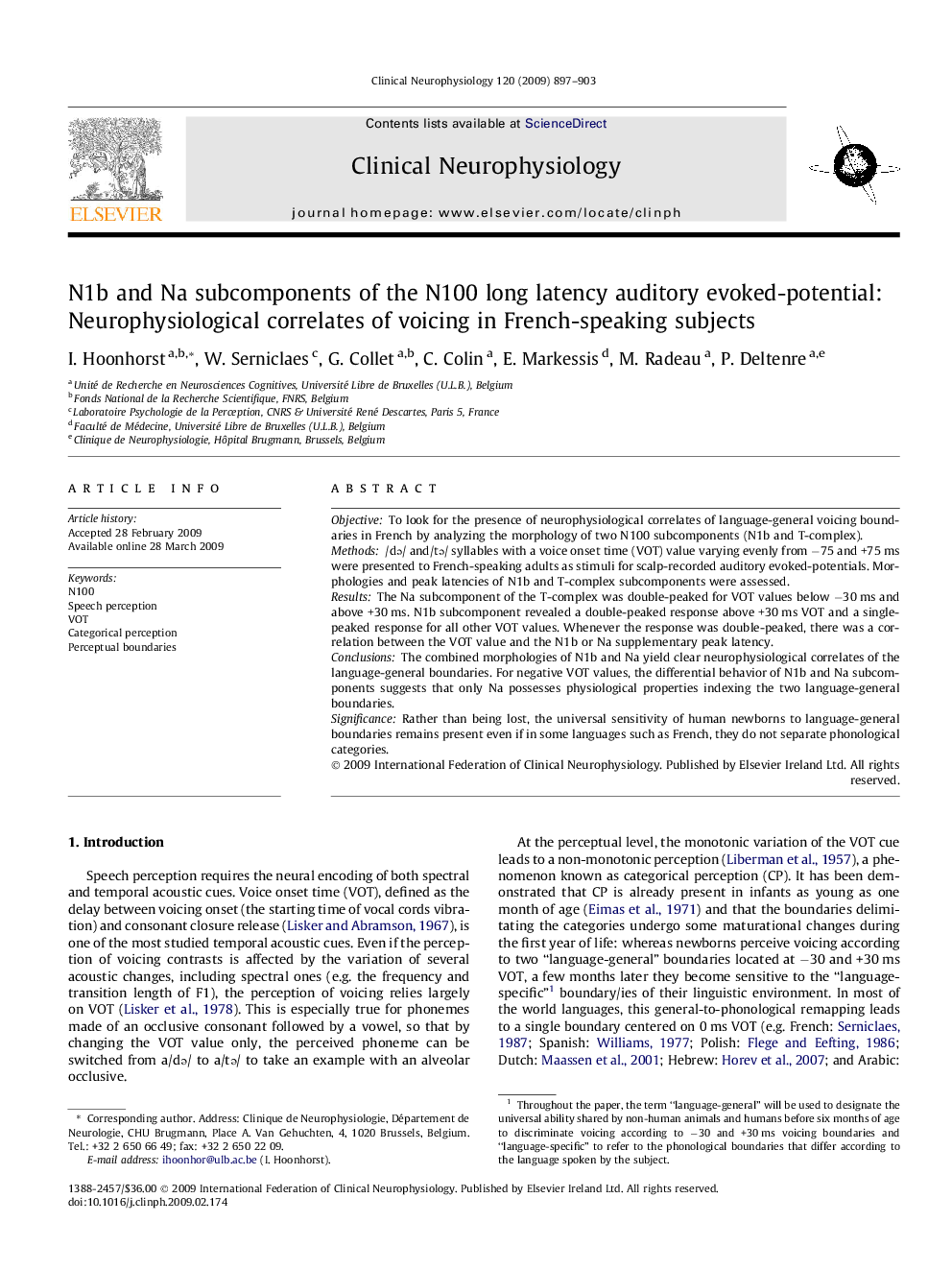| Article ID | Journal | Published Year | Pages | File Type |
|---|---|---|---|---|
| 3046044 | Clinical Neurophysiology | 2009 | 7 Pages |
ObjectiveTo look for the presence of neurophysiological correlates of language-general voicing boundaries in French by analyzing the morphology of two N100 subcomponents (N1b and T-complex).Methods/də/ and/tə/ syllables with a voice onset time (VOT) value varying evenly from −75 and +75 ms were presented to French-speaking adults as stimuli for scalp-recorded auditory evoked-potentials. Morphologies and peak latencies of N1b and T-complex subcomponents were assessed.ResultsThe Na subcomponent of the T-complex was double-peaked for VOT values below −30 ms and above +30 ms. N1b subcomponent revealed a double-peaked response above +30 ms VOT and a single-peaked response for all other VOT values. Whenever the response was double-peaked, there was a correlation between the VOT value and the N1b or Na supplementary peak latency.ConclusionsThe combined morphologies of N1b and Na yield clear neurophysiological correlates of the language-general boundaries. For negative VOT values, the differential behavior of N1b and Na subcomponents suggests that only Na possesses physiological properties indexing the two language-general boundaries.SignificanceRather than being lost, the universal sensitivity of human newborns to language-general boundaries remains present even if in some languages such as French, they do not separate phonological categories.
